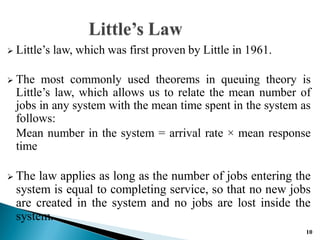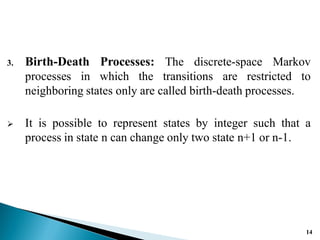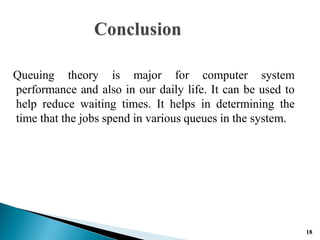The document provides an introduction to queuing theory, covering key concepts such as queues, stochastic processes, Little's Law, and types of queuing systems. It discusses topics like arrival and service processes, the number of servers, system capacity, and service disciplines. Common variables in queueing analysis are defined. Relationships among variables for G/G/m queues are described, including the stability condition, number in system vs. number in queue, number vs. time relationships, and time in system vs. time in queue. Different types of stochastic processes like discrete-state, continuous-state, Markov, and birth-death processes are introduced. Properties of Poisson processes are outlined. The document concludes by noting some applications of queuing
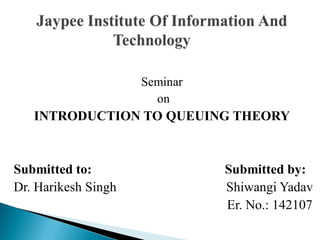

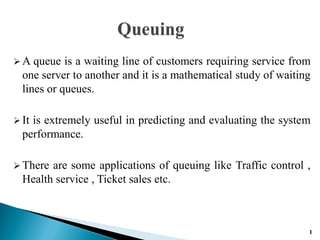
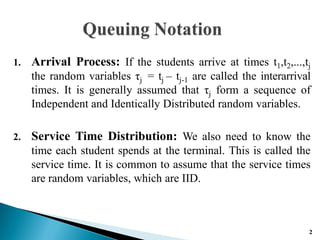
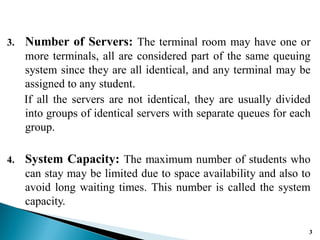
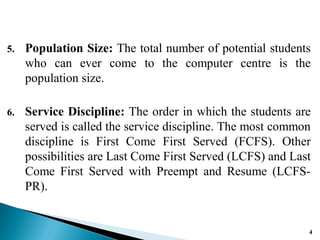


![2. Number in System versus Number in Queue: The
number of jobs in the system is always equal to the sum of
the number in the queue and the number receiving service:
n=nq + ns
n, nq, and ns, are random variables.
The mean number of jobs in the system is equal to the
sum of the mean number in of job in the queue and the
mean number receiving service.
E[n]=E[nq] + E[ns]
If the service rate of each server is independent of the
number in the queue, we have
Cov(nq,ns) = 0 and Var[n] = Var[nq] + Var[ns]
7](https://image.slidesharecdn.com/queuingtheory-151122130444-lva1-app6891/85/Queuing-theory-9-320.jpg)

![4. Time in System versus Time in Queue: The time
spent by a job in a queueing system.
r = w + s
r, w, and s are random variables
The mean response time is equal to the sum of the mean
waiting time and the mean service time.
E[r] = E[w] + E[s]
If the service rate is independent of the number of jobs in
the queue, we have
Cov(w,s) = 0 and Var[r] = Var[w] + Var[s]
9](https://image.slidesharecdn.com/queuingtheory-151122130444-lva1-app6891/85/Queuing-theory-11-320.jpg)
